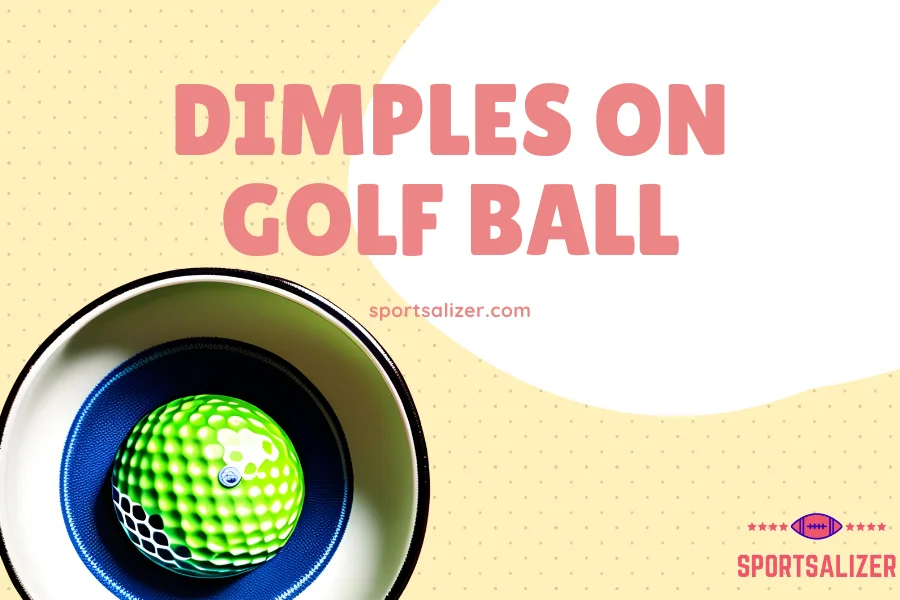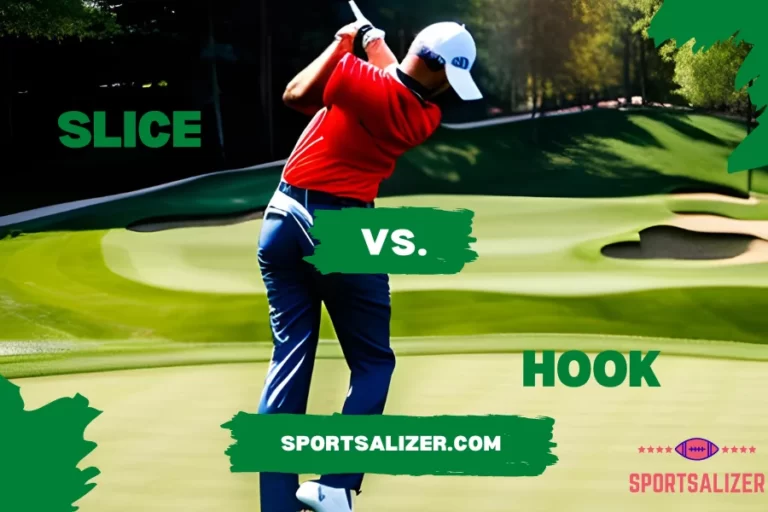The Importance of Dimples on Golf Ball Explained

Golf is one of the sports that is practiced by millions of people all around the globe. It is considered to be one of the most popular sports. A golfer has to have a number of talents in order to be successful in golf, including technique, strength, and accuracy. The kind of golf ball that a player employs is another significant component that has the potential to influence their overall performance. The existence of dimples on a golf ball is one of the characteristics that sets it apart from other balls. In this article, we will explore the science behind dimples on golf ball and how they impact a golfer’s game.
Contents
- 1 History of Dimpled Golf Balls
- 2 How Dimples Work
- 3 Types of Dimples
- 4 Effect of Dimples on Golf Ball Performance
- 5 Factors to Consider When Choosing Golf Balls
- 6 Choosing the Right Golf Ball Based on Dimple Type
- 7 Effect of Weather on Dimpled Golf Balls
- 8 FAQs on Dimples on Golf Ball
- 9 Conclusion
- 10 Trending Now
History of Dimpled Golf Balls
The use of dimpled golf balls dates back to the mid-1800s. Initially, golf balls were made from leather and were smooth on the surface. However, golfers soon realized that the smooth surface of the ball did not provide enough lift, making it difficult to achieve long distances. This led to the idea of adding dimples to the surface of the ball to increase its lift and decrease air resistance.
The first dimpled golf ball was created in the early 1900s by William Taylor, who used a series of shallow dimples on the surface of the ball. This design proved to be effective, and soon other manufacturers began to use similar designs. Over time, the design of dimples on golf balls has evolved, with different manufacturers using unique patterns and sizes.

How Dimples Work
The science behind dimples on a golf ball is based on the principles of aerodynamics. When a golf club makes contact with a ball, the ball immediately starts to spin at a high rate. As it spins, the air flowing over the surface of the ball is disrupted by the dimples. This disruption creates a thin layer of air around the ball, known as the boundary layer.
The boundary layer has a lower pressure than the air around it, which causes the air to flow faster over the top of the ball and slower over the bottom. This difference in airflow creates lift, which allows the ball to stay in the air for longer and travel further. The dimples also reduce drag by creating turbulence in the airflow, which reduces the amount of air resistance the ball encounters.
Types of Dimples
There are several types of dimples that can be found on golf balls. The most common type is the traditional round dimple, which is a shallow, circular depression on the surface of the ball. These dimples are usually around 0.2 inches in diameter and 0.010 inches deep.
Another type of dimple is the hexagonal dimple, which has a flat bottom and straight sides. Hexagonal dimples are often used on high-performance golf balls as they offer better stability and reduced drag.
The third type of dimple is the square dimple, which has a flat bottom and four straight sides. Square dimples are not as common as round or hexagonal dimples, but they can offer improved accuracy and control.
Effect of Dimples on Golf Ball Performance
The performance of a golf ball is significantly altered by the addition of dimples to the surface of the ball. Dimpled golf balls are able to travel more distances than balls with a flat surface because of the dimples. This is due to the fact that the dimples generate lift, which enables the ball to fly farther and remain airborne for a longer period of time.
Dimpled golf balls also experience less drag than smooth-surfaced balls. This is because the dimples create turbulence in the airflow, which reduces the amount of air resistance the ball encounters. This means that golfers are able to achieve greater distances with less effort, resulting in a more efficient swing.
Improved precision is yet another advantage brought about by the dimples on a golf ball. The turbulence that is generated by the dimples may assist in stabilizing the ball’s trajectory, which in turn lessens the impact of the wind and any other external forces. This means that golfers can have more control over their shots, leading to improved accuracy and consistency.
In addition to these benefits, the type and pattern of dimples on a golf ball can also affect its performance. Different patterns and sizes of dimples can influence the amount of lift and drag generated by the ball. For example, golf balls with smaller and more numerous dimples tend to produce more lift than those with larger and fewer dimples. Similarly, golf balls with deeper dimples tend to create more turbulence and reduce drag more effectively.

Factors to Consider When Choosing Golf Balls
When selecting golf balls, there are a number of characteristics to think about, including the kind of dimples and the pattern they make. Golfers should also take into account their own skill level and playing style, in addition to the particular weather and course circumstances in which they would be competing.
For beginners and high-handicap golfers, a golf ball with larger and more numerous dimples may be more appropriate, as it can provide more forgiveness and help to correct slight errors in the swing. For more experienced golfers with a faster swing speed, a golf ball with smaller and deeper dimples may be more suitable, as it can provide greater accuracy and control.
Golfers should also take into account the exact weather and course conditions that they will be playing in. For example, golf balls with more aerodynamic dimple patterns may be better suited for windy conditions, as they can provide greater stability and reduce the effects of wind. Similarly, golf balls with a softer cover may be better suited for colder conditions, as they can provide a better feel and spin control.
Choosing the Right Golf Ball Based on Dimple Type
When it comes to selecting the right golf ball, one important factor to consider is the dimple type. Dimples on a golf ball play a crucial role in its aerodynamics and overall performance. The dimples help create lift, reduce drag, and allow the ball to maintain a stable trajectory during flight. Here are some common dimple types and their effects on ball performance:
- Traditional Dimple Pattern: This is the most common dimple pattern found on golf balls. It consists of evenly spaced, round dimples covering the entire surface of the ball. Balls with this dimple pattern generally offer a balance of distance, control, and trajectory stability. They are suitable for a wide range of golfers with varying swing speeds and playing styles.
- Shallow Dimples: Some golf balls feature shallower dimples compared to traditional ones. These shallow dimples tend to reduce drag, resulting in a longer carry and increased distance. Golfers with slower swing speeds often benefit from this type of dimple pattern as it helps maximize their distance potential.
- Dimpleless or Micro-Dimple Balls: In recent years, golf ball manufacturers have introduced designs with tiny, almost imperceptible dimples or even dimpleless surfaces. These micro-dimples reduce drag and enhance aerodynamics, providing better performance in windy conditions. These balls are particularly popular among professional golfers or those seeking maximum control and precision.
Recommended Reading | Tiger Woods Signed Golf Ball
Effect of Weather on Dimpled Golf Balls
The weather conditions you encounter on the golf course can have a significant impact on how dimpled golf balls perform. Here’s how various weather elements affect the performance of dimpled golf balls:
- Wind: Wind is one of the most influential weather factors in golf. Dimpled golf balls are designed to be affected by the wind, allowing them to stay on a stable trajectory. However, strong crosswinds can still cause the ball to drift off course. When playing in windy conditions, it is advisable to choose a golf ball with a dimple pattern that offers better wind resistance, such as those with micro-dimples or shallow dimples.
- Temperature: Temperature can affect the compression of golf balls, which in turn impacts their distance and feel. In colder weather, golf balls tend to become less resilient, leading to reduced distance. Conversely, in hotter weather, balls may compress more, resulting in longer shots. Golfers should consider adjusting their club selection and choosing a golf ball that suits the prevailing temperature to optimize their performance.
- Rain: When playing in wet conditions, golf balls with deeper dimples or a higher number of dimples can help channel away water and maintain better contact with the clubface. These dimple designs minimize the chances of the ball skidding or losing distance due to excessive moisture.
- Altitude: The altitude of a golf course affects air density, which can impact ball flight and distance. At higher altitudes, where air density is lower, golf balls tend to experience less drag, resulting in longer shots. In such conditions, choosing a golf ball with a dimple pattern optimized for low-drag performance can be advantageous.
FAQs on Dimples on Golf Ball
What are dimples on a golf ball?
A golf ball’s surface may include a pattern of dimples, which are microscopic depressions of a shallow depth. They are made to decrease the amount of drag and increase the amount of lift, which enables the ball to move farther and with more precision through the air.
How do dimples affect the flight of a golf ball?
The dimples on the ball generate turbulence in the air surrounding it, which serves to decrease the amount of drag and increase the amount of lift. Because of this, the ball is able to go farther and with more precision while it is in the air. A golf ball wouldn’t be able to go as far as it does if it didn’t have those dimples in it.
How many dimples are on a golf ball?
It’s possible for a golf ball to have anywhere from 300 to 500 dimples, but that seems to be the sweet spot for most players. However, some golf balls may have as few as 200 dimples, while others may have as many as 1000.
What shape are the dimples on a golf ball?
The shape of the dimples on a golf ball can vary, but they are typically round or oval in shape. The size of the dimples can also vary, with some dimples being larger or deeper than others.
How are dimples put on a golf ball?
Dimples are put on a golf ball during the manufacturing process. The ball is placed in a machine that presses small indentations into the surface of the ball. In order to get the proper flight characteristics for the ball, extensive calculation goes into determining both the number of dimples and their location.
Conclusion
Although the dimples on a golf ball may seem to be a trivial feature, they really have a substantial influence on both the performance of the ball and the performance of the player. The science behind dimples is based on the principles of aerodynamics, with the dimples creating lift and reducing drag. Different patterns and types of dimples can affect the amount of lift and drag generated by the ball, and golfers should consider their own skill level and playing style when choosing golf balls. By understanding the science behind dimples on a golf ball, golfers can make more informed decisions about their equipment and improve their game.





![Tiger Woods Signed Golf Ball [Memorabilia Value To Be Worth $50,000]](https://sportsalizer.com/wp-content/uploads/2023/01/Tiger-Woods-Signed-Golf-Ball-768x512.webp)




